Хранилище энергии
| Изображение | Посмотреть продукт | Номер производителя | ||||
|---|---|---|---|---|---|---|
| -- |

|
DACPOL | ДОМ ХРАНИЛИЩЕ ЭНЕРГИИ ЕСС | ПОСМОТРЕТЬ | -- | Под заказ |
| picture_as_pdf |
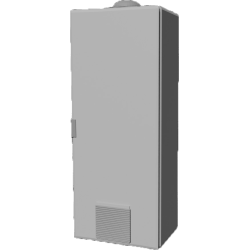
|
DACPOL | ENERGY STORAGE NMC | ПОСМОТРЕТЬ | -- | Под заказ |
| picture_as_pdf |
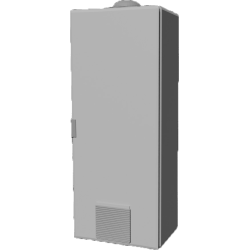
|
DACPOL | ENERGY STORAGE LFP | ПОСМОТРЕТЬ | -- | Под заказ |
| picture_as_pdf |
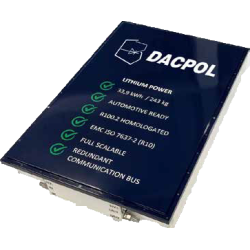
|
DACPOL | Battery Pack for Vehicles | ПОСМОТРЕТЬ | -- | Под заказ |
| picture_as_pdf |
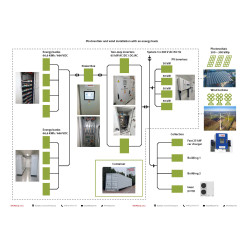
|
DACPOL | Photovoltaic and wind installation with an energy bank | ПОСМОТРЕТЬ | -- | Под заказ |
| picture_as_pdf |
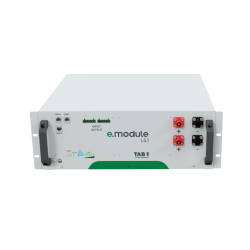
|
TAB | Модуль TAB e.module L5.1 48V | ПОСМОТРЕТЬ | 1026194 | 20 |
Электрохимические батареи, то есть аккумуляторы, позволяют хранить энергию в легко восстанавливаемой форме. Преимуществами аккумуляторов являются высокая плотность энергии. Плотность энергии — это удельное количество накопленной электрической энергии, которое может быть выражено по объему или массе. К недостаткам использования аккумуляторов относятся саморазряд, износ аккумулятора, проявляющийся в изменении параметров — так называемое старение батареи, длительное время зарядки, влияние температуры на аккумулятор, а также в случае некоторых технических решений — короткий срок службы.
В энергетических хранилищах используются два типа аккумуляторов: свинцово-кислотные и литий-ионные.
Типы энергетических хранилищ
Свинцово-кислотные аккумуляторы имеют КПД около 70%. Их отличает низкая цена, простота зарядного устройства и возможность кратковременной нагрузки большими токами. Благодаря этим свойствам они используются в системах бесперебойного питания (UPS). Значительным недостатком является короткий срок службы (около 1000 циклов заряд-разряд) и их конструкция. В свинцово-кислотных аккумуляторах электролит находится в жидком состоянии, что может привести к утечкам и требует периодического доливания электролита. Чтобы избежать этой проблемы, свинцово-кислотные аккумуляторы производятся как необслуживаемые:
- SLA – Sealed Lead Acid – герметичные свинцово-кислотные аккумуляторы
- VRLA – Valve Regulated Lead Acid – свинцово-кислотные с клапанным регулированием
Они производятся по двум технологиям:
- Гелевые аккумуляторы, в которых водный раствор серной кислоты смешан с диоксидом кремния и имеет консистенцию геля, выполняя роль электролита. Однако такие аккумуляторы ограничены по возможности отдачи большого тока, поэтому редко применяются в мощных установках.
- Аккумуляторы AGM (Absorbed Glass Mat), в которых электролит впитан в сепаратор из пористого стекловолокна.
Литий-ионные аккумуляторы (Li-ion) обладают КПД около 94%. Эти элементы являются одними из самых легких, поэтому используются в электронике. Со временем они начали применяться в электромобилях. Аккумуляторы в электромобилях более долговечны (служат десятки лет, до 1800 циклов заряд-разряд), оснащены системами охлаждения и нагрева. Они могут заряжаться от 0 до 80% за 15–30 минут без значительного влияния на срок службы. Благодаря достижениям в области электромобильности литий-ионные аккумуляторы рассматриваются как стационарные накопители энергии для возобновляемых источников, работа которых нестабильна и нерегулярна.
Никель-металлогидридные аккумуляторы (NiMH) достигают КПД до 92%, при сроке службы до 2000 циклов заряд-разряд. Их основным преимуществом является отсутствие токсичного кадмия. Эти элементы характеризуются высокой плотностью энергии, емкостью и сниженным эффектом памяти. Недостатком является невозможность отдачи больших токов. NiMH аккумуляторы подвержены саморазряду, однако технологии развиваются, и этот эффект постепенно уменьшается.
Компенсация реактивной мощности с использованием энергетических банков
Системы бесперебойного питания (UPS) применяются для питания критически важных устройств в случае отключения электросети, либо для защиты чувствительных компонентов от помех в сети.
В UPS устанавливаются конденсаторы, поэтому из сети потребляется не только активная, но и реактивная (емкостная) мощность. В новых конструкциях также применяются схемы коррекции коэффициента мощности (PFC), снижающие уровень гармоник и реактивной мощности, что позволяет увеличить коэффициент мощности cosφ при полной нагрузке. Альтернативным решением является использование фазового сдвигателя на входе, что позволяет свести емкостную входную мощность к нулю.
Как устроено хранилище электрической энергии?
Составные части системы накопления энергии включают:
- двунаправленный преобразователь – инвертор DC/AC и AC/DC,
- аккумуляторный блок – набор химических аккумуляторов,
- система управления батареями (BMS),
- программируемый контроллер – для управления алгоритмами,
- система мониторинга и визуализации (GUI – графический интерфейс) – обеспечивает надзор и контроль над установкой,
- вспомогательные элементы для подключения к сети – измерительное оборудование или, например, разделительный трансформатор.
Особого внимания заслуживает двунаправленный преобразователь. Это преобразователь DC/AC и AC/DC, задача которого — управлять процессами зарядки и разрядки аккумуляторов, а также обменом энергии между электросетью и накопителем. Он должен обеспечивать соответствующие параметры напряжения и при перегрузке – нужный пиковый ток. Система должна синхронизироваться с сетью, а при отключении питания обеспечивать автономную работу. Также преобразователь должен "заботиться" об аккумуляторе: заряжать в соответствии с характеристиками, не допуская перезаряда и перегрева, а также предотвращать тепловой разгон. Преобразователь должен взаимодействовать с BMS и обеспечивать гальваническую развязку, например, с помощью выходного трансформатора.
Фотовольтаика – накопители энергии повышают ее рентабельность
Устройство, повышающее рентабельность фотовольтаических установок — это накопители энергии. Вместо того чтобы передавать излишки произведенной энергии в сеть, фотовольтаика с накопителем сохраняет ее в батареях, таких как никель-металлогидридные (NiMH) или все чаще — литий-ионные (Li-ion). Благодаря этому энергия доступна в любое время, независимо от условий и тарифов. Хранилище энергии делает объект независимым от электросети. Потребление электроэнергии в таком случае фактически становится бесплатным.
Какие требования предъявляет фотовольтаика – аккумуляторы для PV-систем
Аккумуляторы в PV-системах должны соответствовать определенным требованиям. Накопитель из предложения DACPOL должен быть подобран в первую очередь по емкости. Она должна соответствовать общей мощности установки. Рекомендуется 1–1,5 кВт⋅ч емкости на 1 кВт пик мощности установки.
Второй важный параметр — мощность, определяющая, сколько устройств одновременно может питаться от накопителя. Как PV-система подбирается под энергетические потребности здания, так и аккумулятор должен подбираться аналогично — тогда он может служить как для накопления энергии от ВИЭ, так и для аварийного питания.
Не менее важны производительность и КПД аккумуляторов. В бытовых хранилищах DACPOL используются:
- литий-ионные аккумуляторы с наивысшим КПД,
- никель-металлогидридные аккумуляторы с чуть меньшим КПД.
Накопители с такими аккумуляторами обеспечивают надежную работу фотовольтаических систем и питаемых ими устройств.
Накопители энергии с фотовольтаикой и свинцово-кислотные аккумуляторы
Накопители энергии на базе свинцово-кислотных аккумуляторов не рекомендуются для фотовольтаики. У них короткий срок службы из-за низкой устойчивости к частым циклам заряд-разряд. Также они быстро теряют емкость при высоких температурах и имеют большие габариты, из-за чего мощные накопители занимают много места.



